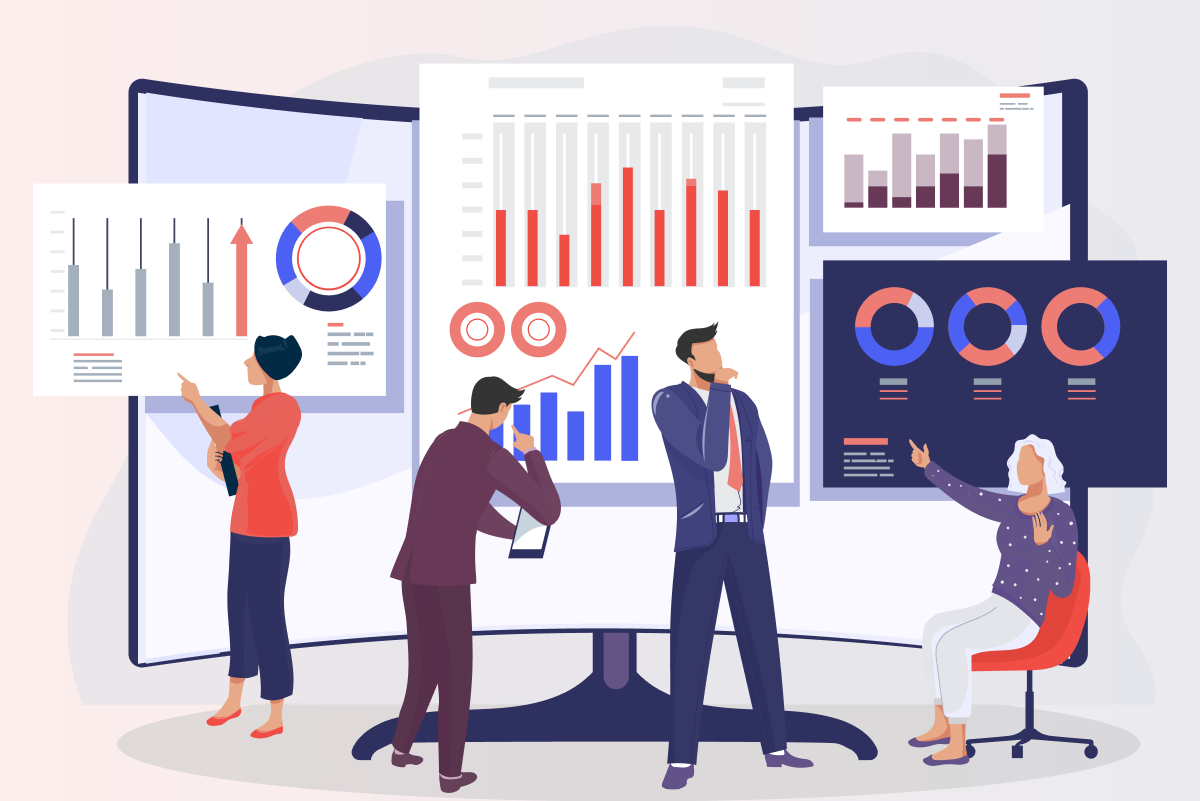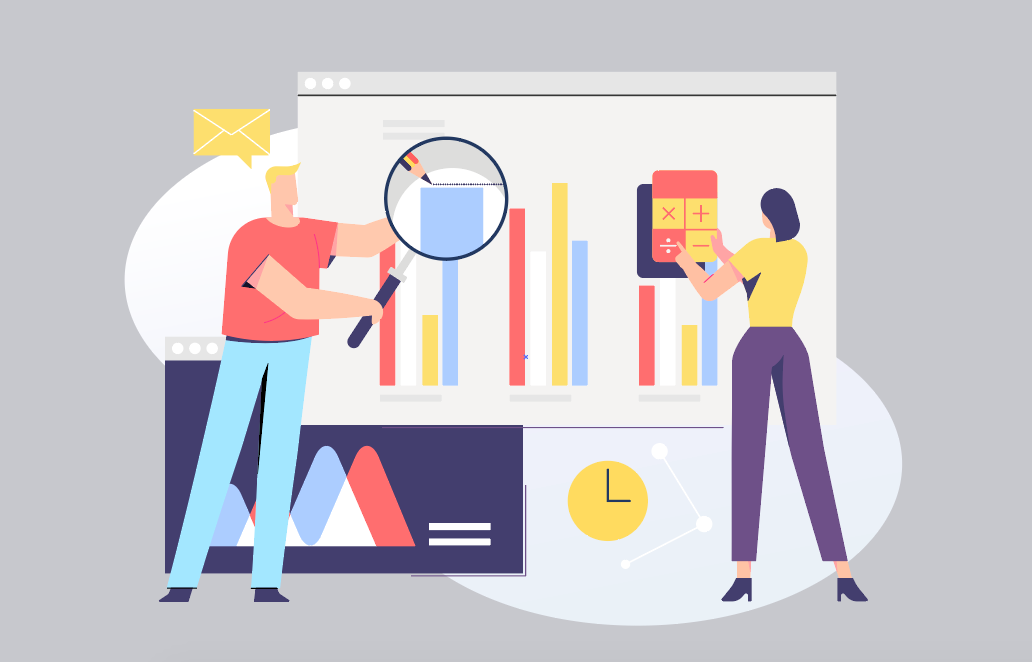
Mastering B2B Lead Generation with High-Impact Lead Magnets
September 19, 2025
AI Marketing and Ethics: The Most Valuable Guidance You Need
September 19, 2025The Basics of Sales Forecasting
Sales forecasting is the practice of predicting future sales based on historical data and market trends. It’s a critical component of any business strategy, helping organizations make informed decisions about production, inventory, staffing, and marketing. Traditional sales forecasting methods often rely on historical sales data, seasonality, and expert judgment. While these methods are valuable, they can fall short in today’s rapidly changing business landscape. This is where the integration of Artificial Intelligence (AI) in sales forecasting comes into play.
AI-powered sales forecasting leverages cutting-edge technologies, including machine learning, data analytics, and predictive modeling, to provide more accurate and dynamic forecasts. Unlike traditional methods, AI can handle vast datasets and detect intricate patterns, leading to better predictions.
Role of AI in Sales Forecasting
AI’s role in sales forecasting is transformative. It can process and analyze enormous volumes of data in real-time, providing businesses with up-to-the-minute insights. AI algorithms can detect emerging trends, changes in customer behavior, and external factors that impact sales, such as economic fluctuations or social media trends.
Furthermore, AI can automate the data collection and analysis process, reducing the time and effort required for forecasting. This automation allows businesses to adapt quickly to changing market conditions and make data-driven decisions in real-time.
Why Sales Forecasting Matters
Sales forecasting matters because it underpins a wide range of critical business activities. Here are a few reasons why it’s essential:
-
Resource Allocation: Accurate sales forecasts help businesses allocate resources effectively. This includes decisions related to inventory management, workforce planning, and marketing budgets.
-
Inventory Management: Knowing what, when, and how much to stock is vital for businesses. AI-driven forecasts can prevent overstocking or understocking, saving costs and preventing lost sales.
-
Marketing Strategy: AI can provide insights into customer preferences and behavior. This enables businesses to tailor their marketing strategies to individual customers, increasing the chances of conversion.
-
Revenue Projections: Accurate sales forecasts provide a foundation for financial planning and budgeting, allowing companies to set realistic revenue goals.
-
Competitive Edge: In a competitive market, businesses that can adapt quickly to changes and seize opportunities gain a significant edge. AI-driven sales forecasting supports this agility.
In summary, AI-powered sales forecasting is not just a technological trend; it’s a strategic imperative for businesses seeking to thrive in the modern marketplace.

The Pros of Implementing AI in Sales Forecasting
Enhanced Accuracy
One of the most compelling advantages of integrating AI into sales forecasting is the enhanced accuracy it offers. Traditional forecasting methods are limited by the human capacity to process data and recognize complex patterns. AI, on the other hand, excels in processing vast amounts of data swiftly and accurately. This means that AI can identify subtle, non-linear relationships and factors that might go unnoticed by human analysts.
For example, consider a retail company trying to predict sales of winter clothing. AI can take into account numerous variables, including historical sales data, weather patterns, social media mentions, and economic indicators. It can recognize that a dip in temperature combined with a surge in social media discussions about winter fashion trends is likely to drive sales. The result is a highly accurate sales forecast that can lead to more effective inventory management and marketing strategies.
Improved Customer Insights
AI-powered sales forecasting delves into customer behavior and preferences at an unprecedented level of detail. By analyzing vast amounts of data from various sources, AI can create individual customer profiles. These profiles provide insights into what, when, and how customers are likely to buy.
Imagine an e-commerce business that uses AI to forecast sales. It may discover that a specific customer, let’s call her Sarah, frequently shops for outdoor equipment in the spring. AI can recommend products to Sarah based on her past behavior, increasing the likelihood of her making a purchase. This level of personalization boosts customer satisfaction and fosters brand loyalty.
Efficient Resource Allocation
Efficient resource allocation is a cornerstone of successful business management, and AI can significantly contribute to this goal. AI-driven sales forecasting helps businesses make optimal decisions regarding resource allocation. Here’s how:
-
Labor Force: AI can forecast peaks and troughs in demand, enabling businesses to schedule employees more efficiently. For instance, a restaurant can have the right number of waitstaff on busy weekends and fewer on slower weekdays.
-
Inventory Management: AI can fine-tune inventory levels. Companies can avoid overstocking by accurately predicting demand, which reduces holding costs. Conversely, understocking can be prevented, avoiding lost sales and frustrated customers.
-
Marketing Budget: With AI insights, marketing budgets can be optimized. Instead of blanket marketing campaigns, businesses can target their efforts where they are likely to have the most significant impact.
Cost Reduction
AI can lead to cost reduction in various aspects of sales forecasting and business operations:
-
Automation: AI automates many of the data collection and analysis processes, reducing the need for manual labor. This not only saves time but also cuts down on labor costs.
-
Preventing Overhead: Overstocking and understocking issues can be costly. AI helps maintain optimal inventory levels, avoiding unnecessary storage costs and lost sales.
-
Efficient Marketing Spending: AI can identify the most effective marketing strategies, preventing the waste of resources on ineffective campaigns.
-
Reduced Errors: Human errors can be costly, especially in inventory management. AI minimizes these errors by making data-driven decisions.
In conclusion, implementing AI in sales forecasting enhances accuracy, provides valuable customer insights, optimizes resource allocation, and reduces costs, giving businesses a competitive edge in the market.

The Cons of Implementing AI in Sales Forecasting
Initial Costs and Learning Curve
While the advantages of AI in sales forecasting are clear, there are significant hurdles to overcome. One of the primary challenges is the initial cost associated with implementing AI. Acquiring the necessary technology, hiring experts, and training staff can be expensive.
Companies must invest in AI tools, infrastructure, and experts to develop, implement, and maintain AI-powered sales forecasting systems. The cost may be prohibitive for smaller businesses, making it a more viable option for larger corporations with substantial budgets.
Additionally, there is often a learning curve associated with adopting AI technology. Employees may require training to effectively use the AI tools and adapt to new processes. This transition period can disrupt operations and result in temporary productivity losses.
Data Privacy and Security Concerns
AI in sales forecasting relies heavily on data, and this brings about significant data privacy and security concerns. Businesses must collect and store vast amounts of customer and transaction data to train AI models effectively.
Maintaining data privacy and security is paramount to avoid data breaches, legal issues, and loss of customer trust. A breach can lead to severe consequences, including financial penalties and damage to a company’s reputation.
Striking a balance between utilizing data for accurate forecasts and ensuring customer privacy is a challenge that requires careful planning and robust security measures.
Overreliance on Technology
While AI can greatly enhance sales forecasting, there is a risk of overreliance on technology. Depending entirely on AI for decision-making can lead to complacency among employees. They may start to view AI predictions as infallible and disregard their own expertise and insights.
It’s crucial to maintain a balance between AI-driven forecasts and human judgment. Humans can consider intangible factors and nuances that AI might miss. Striking this balance can be challenging, but it is necessary to ensure a holistic approach to sales forecasting.
Potential Job Displacement
The fear of job displacement due to AI adoption is a genuine concern. While AI augments human capabilities and creates new job roles, it can also automate repetitive tasks, rendering some jobs redundant. For example, data entry and manual data analysis roles may be eliminated or reduced in organizations using AI-driven sales forecasting.
Businesses must address these concerns by upskilling their workforce to handle more complex tasks that AI cannot perform. This requires a commitment to employee development and a well-thought-out transition plan.
In conclusion, the cons of implementing AI in sales forecasting include initial costs, data privacy and security concerns, the risk of overreliance on technology, and potential job displacement. These challenges must be acknowledged and managed to ensure a successful integration of AI in sales forecasting.

Challenges and Solutions in AI Sales Forecasting
Data Quality Issues
The quality of data used for sales forecasting is of paramount importance. AI systems are only as good as the data they’re trained on. Low-quality or outdated data can lead to inaccurate predictions. Companies must invest in data quality assurance, which includes:
-
Data Cleaning: Removing duplicate, incomplete, or inaccurate data points.
-
Data Integration: Ensuring that data from various sources is compatible and can be analyzed together.
-
Data Verification: Regularly verifying the accuracy and reliability of data sources.
Additionally, businesses should establish a process for data governance, assigning responsibility for data quality and ensuring data compliance with privacy regulations.
Algorithm Bias and Fairness
AI algorithms can perpetuate biases present in historical data. For example, if past hiring decisions were biased, AI models used in human resources may continue the discrimination. This bias can affect sales forecasting, especially in areas related to customer demographics.
To address this challenge, companies must:
-
Audit AI Models: Regularly assess AI models for bias and fairness. This includes checking for disparities in predictions among different demographic groups.
-
Diverse Data Sets: Use diverse and representative data sets for training AI models to reduce bias.
-
Explainable AI: Employ models that can provide explanations for their predictions, making it easier to identify and address bias.
Interpretable AI Models
The “black box” nature of some AI models can be a challenge. In sales forecasting, stakeholders need to understand how predictions are made, especially when these predictions influence critical business decisions.
To address this, businesses should consider using more interpretable AI models, which offer transparency in their decision-making process. These models provide insights into why a particular prediction was made, making it easier for stakeholders to trust and act upon the AI-generated forecasts.
Change Management Strategies
Introducing AI into an organization can be disruptive, and employees may resist this change. Effective change management strategies are vital to mitigate resistance and ensure a smooth transition.
These strategies include:
-
Clear Communication: Open and transparent communication with employees about the reasons for AI adoption and the benefits it brings.
-
Employee Training: Providing training and upskilling opportunities to help employees adapt to new AI tools and processes.
-
Involvement: Encouraging employees to be part of the AI implementation process by seeking their input and feedback.
By addressing these challenges with appropriate solutions, businesses can harness the full potential of AI in sales forecasting while mitigating risks.

Tips for Implementing AI in Sales Forecasting
Choosing the Right AI Tools and Platforms
Selecting the appropriate AI tools and platforms is a critical first step. Businesses should assess their specific needs, budget constraints, and technical capabilities before choosing an AI solution. Cloud-based AI platforms are often cost-effective and scalable, making them a popular choice.
Data Collection and Preprocessing Best Practices
To ensure accurate forecasts, companies should establish robust data collection and preprocessing procedures. This includes:
-
Data Sources: Identifying relevant data sources and integrating them effectively.
-
Data Quality Assurance: Regularly cleaning and verifying data for accuracy.
-
Data Privacy: Ensuring compliance with data privacy regulations.
Employee Training and Involvement
Employee training is essential to bridge the gap between AI technology and human expertise.
Providing employees with the necessary training is crucial to ensure they can effectively utilize AI in their roles. Training should cover:
-
AI Basics: An introduction to AI concepts, terminology, and its applications.
-
Tool Familiarization: Training on the specific AI tools and platforms the company has adopted.
-
Data Interpretation: Teaching employees how to understand and interpret AI-generated forecasts and recommendations.
-
Collaboration: Promoting cross-functional collaboration between employees who use AI and those who may be less familiar with it.
Involving employees in the AI implementation process is equally important. Encouraging their input, feedback, and insights can lead to more effective adoption and a sense of ownership among the workforce.
Continuous Monitoring and Adjustment
AI is not a “set it and forget it” technology. Continuous monitoring and adjustment are necessary to ensure the accuracy and relevance of AI-generated forecasts. Here’s how companies can do it:
-
Model Evaluation: Regularly assess the performance of AI models to identify any deviations from expected results.
-
Feedback Loops: Establish feedback mechanisms that allow employees to provide insights on the accuracy and usefulness of AI-generated predictions.
-
Algorithm Fine-Tuning: Based on feedback and changing market conditions, adjust AI algorithms to improve forecasting.
By following these tips, businesses can maximize the benefits of AI in sales forecasting while mitigating potential challenges.
Conclusion: The Future of Sales Forecasting in AI Marketing
The Evolving Landscape
The integration of AI in sales forecasting represents a fundamental shift in the marketing landscape. Traditional forecasting methods, while valuable, often fall short in today’s rapidly changing business environment. AI’s ability to process vast datasets, recognize intricate patterns, and make real-time predictions is invaluable. It allows businesses to adapt swiftly to changes and make data-driven decisions, ultimately giving them a competitive edge.
As technology continues to advance, AI’s role in sales forecasting will only grow. Businesses that embrace this technology are better equipped to thrive in the digital age. However, it’s essential to remember that AI is not a replacement for human expertise but a powerful complement.
Striking a Balance
The key to success in sales forecasting lies in striking a balance between human intuition and AI precision. While AI can provide accurate and granular predictions, human judgment can consider intangible factors and make decisions based on experience and creativity.
Businesses should view AI as a tool that augments human capabilities, not as a replacement. This balanced approach ensures that the advantages of AI can be harnessed while preserving the value of human expertise.
Embracing the Opportunities
The advantages of implementing AI in sales forecasting are undeniable. Enhanced accuracy, improved customer insights, efficient resource allocation, and cost reduction are just a few of the benefits. The success stories in various industries demonstrate the transformative power of AI in optimizing sales strategies and driving growth.
As AI technology continues to evolve and become more accessible, it’s a realm of opportunities that businesses should embrace. Those who adapt and integrate AI effectively are well-positioned to thrive in an increasingly data-driven and competitive business landscape.
In conclusion, AI is the future of sales forecasting, and it’s a future full of potential. By leveraging the advantages of AI while acknowledging its challenges, businesses can make data-driven decisions that lead to growth and success.


